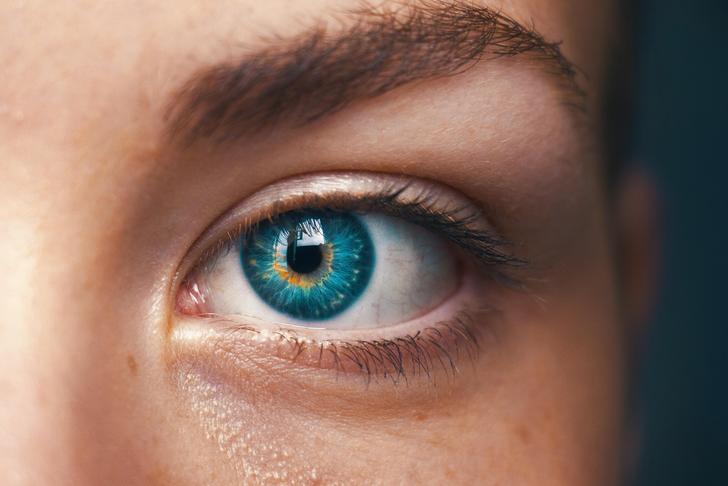10 temporal arteritis symptoms
 Article Sources
Article SourcesTemporal arteritis, or giant cell arteritis, is a condition that causes inflammation in the lining of the arteries in your head. The most commonly affected place is at or near the temples. Inflammation can cause noticeable swelling around the afflicted arteries, as well as significant pain and discomfort.[[1]] Various temporal arteritis symptoms can cause significant disruption to daily life. Prompt treatment can quickly alleviate symptoms and reduce the risk of permanent side effects. Unfortunately, even with treatment, relapses are possible. For this reason, people with temporal arteritis require regular doctor’s visits for the rest of their life.[[1]]
Severe Head Pain
The most common symptom of temporal arteritis is severe head pain, which may feel like a tension headache and present with no other symptoms at first. Other times, the head pain may feel more like a migraine and occur with vision problems, nausea, and other common migraine symptoms.[[1]] Chronic daily headaches can have other serious causes besides temporal arteritis. Examples include stroke, brain inflammation, meningitis, and brain tumors. A traumatic brain injury or blow to the head can also cause chronic head pain.[[2]]

Advertisement
Scalp Tenderness
Inflammation in giant cell arteritis can cause significant scalp tenderness. This can make it challenging for someone with this condition to touch their scalp or do simple things like brush their hair or wear a hat.[[1]] Scalp tenderness can have other causes. Examples include rashes, sunburn, insect bites, head lice, and psoriasis on the head. Although itchiness is a hallmark of dandruff, this common skin condition can also cause the scalp to become tender in severe cases.[[3]]

Advertisement
Jaw Pain
Jaw pain is another temporal arteritis symptom often caused by inflammation of the arteries. Although it can happen when the arteries at the temples are inflamed, this symptom is more common if arteries near the jaw are affected.[[1]] Jaw pain in giant cell arteritis generally isn’t constant. Instead, it typically presents itself when the jaw is opened wide or a person is chewing. This can make eating, yawning, and coughing painful.[[1]]

Advertisement
Fever
Some people with temporal arteritis present with a fever while other symptoms (like inflammation and pain) also occur. Fever often happens when there is inflammation in the body because both are linked to the immune system.[[1]] Fever alone is not enough to diagnose temporal arteritis because fever can happen from a range of other conditions — some serious and some benign. However, fever, alongside other temporal arteritis symptoms, may help health care providers make a positive diagnosis.[[3]]

Advertisement
Fatigue
Fatigue is another vague temporal arteritis symptom that may not positively indicate the condition on its own but can help provide a diagnosis when other symptoms are present. Fatigue, or feeling excessively tired all of the time, may be caused by an ongoing immune system response.[[1]] Fatigue alone can be caused by benign issues, like not sleeping well the night before. Most illnesses and conditions, including the common cold, can cause acute fatigue.[[4]]

Advertisement
Unintentional Weight Loss
In some cases, temporal arteritis can lead to unintentional weight loss. The weight loss may be barely noticeable and happen over a long period, or it can be drastic and happen quickly.[[1]] Unintentional weight loss most likely happens because of long-term pain and challenges eating. Many people find their appetite is less when they’re in pain, but experts haven’t determined why.[[6]] Appetite reduction naturally leads to lower calorie consumption, causing weight loss.

Advertisement
Vision Problems
Among the more concerning temporal arteritis symptoms are vision problems, which can happen gradually or appear suddenly. Potential vision problems include blindness in one or both eyes and blurred or double vision.[[7]] Generally, vision problems are later signs of giant cell arteritis and don’t happen until the condition has progressed. However, blurred or double vision can occasionally happen earlier on in the condition, alongside common initial symptoms.[[7]]

Advertisement
Potential Causes of Arterial Arteritis
The exact cause of arterial arteritis isn’t known. However, it’s suspected that a faulty immune response, genetics, and certain infections may increase the likelihood of developing this condition.[[7]] Many of those with arterial arteritis also have a condition called polymyalgia rheumatic. This suggests the two conditions are linked somehow, but experts have yet to identify how.[[7]] Polymyalgia rheumatic causes pain and stiffness in the hips, shoulders, and neck.[[1]]

Advertisement
Treatment Options for Suspected Diagnosis
When temporal arteritis is suspected, health care providers will generally begin treatment with corticosteroids right away. Often, this is done before biopsies and other lab results have come in or even been taken. This is because prompt treatment of this condition can reduce the risk of permanent blindness and other lasting health issues.[[7]] Most people begin to feel better on the medications within a few days. If a diagnosis is confirmed, oral corticosteroids must be taken for 1 to 2 years.[[7]]

Advertisement
Treatment Options After Diagnosis Is Confirmed
If a temporal arteritis diagnosis is confirmed, a person will need to continue the prescribed corticosteroid for 1 to 2 years. During this time, regular doctor’s visits are required, as long-term use of this medication can have serious side effects in some people.[[7]] A biologic medication is often added because it reduces the amount of corticosteroids required to control the condition. A health care provider may also recommend calcium and Vitamin D supplements to protect bone density while on the medications.[[7]]

Advertisement





